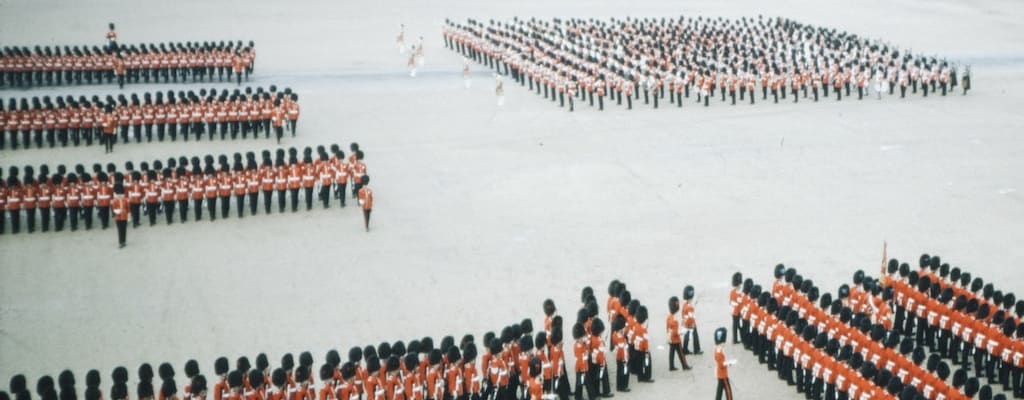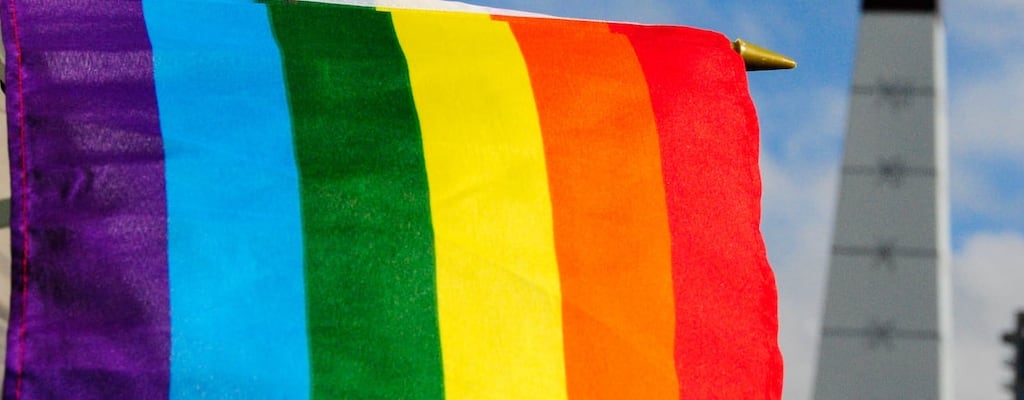raise the flag and see who salutes: Idiom Meaning and Origin
What does ‘raise the flag and see who salutes’ mean?
The idiom "raise the flag and see who salutes" means to take action or make a bold statement to test people's reactions or loyalty, and see who responds positively or supports it.

Idiom Explorer
The idiom "see which way the cat jumps" means to wait and see how a situation develops before making a decision or taking action.
The idiom "see the light of day" means to be revealed or brought to attention after being hidden or kept secret for a period of time.
"Run something up the flagpole" means to test an idea or proposal by presenting it to others to gauge their reactions or opinions on it. This idiom is often used in a business or organizational context to determine the viability or popularity of a new concept before fully implementing it.
The idiom "rise to the occasion" means to perform exceptionally well or exceed expectations when faced with a challenge or difficult situation.
The idiom "rise to the challenge" means to confront and overcome a difficult situation or task with determination, resilience, and success.
The idiom "rise and shine" means to wake up and get out of bed with energy and enthusiasm.
The idiom "red flag" refers to a warning sign or indicator of a problem or potential danger.
The idiom "red face test" is a metaphorical expression that refers to a situation where someone is embarrassed or ashamed by their actions or words. It implies a test of one's honesty, credibility, or integrity, as one might turn red in the face when feeling guilty or caught in a lie.
The idiom "read someone the riot act" is used to describe when someone is given a stern warning or reprimanded for their behavior or actions.
Hidden Salutes
This idiom is a combination of two separate idioms: "run something up the flagpole," "raise eyebrows," and "raise one's voice." When used together, the idiom "raise the flag and see who salutes" indicates an action that is intended to provoke a reaction or response from others. It suggests a willingness to take a risk or make a bold move in order to test the reactions or attitudes of others.
The phrase "run something up the flagpole" is a figurative expression that originated in the advertising industry. It refers to the act of presenting an idea or proposal to a group or audience in order to gauge their reaction or interest. It is similar to raising a flag and observing who salutes, as it involves testing the response or enthusiasm of others before committing to a course of action.
The phrase "raise eyebrows" is another idiomatic expression that conveys a sense of surprise, curiosity, or disapproval. When something unexpected or controversial occurs or is said, it can cause people to raise their eyebrows in response. This phrase is often used to describe moments when someone's actions or words provoke a reaction or response from others.
Lastly, "raise one's voice" means to speak louder or with more intensity than usual. It can be used literally, as in a situation where someone is speaking loudly or shouting to be heard. Alternatively, it can be used figuratively to describe a situation where someone expresses their opinion or emotions with more force or passion than usual.
When these idioms are combined with "raise the flag and see who salutes," they emphasize the idea of intentionally taking action or making a statement to test the loyalty, support, or reaction of others. It implies a willingness to put oneself in a vulnerable position and gauge the responses and attitudes of those around.
The use of this idiomatic expression can be seen in various contexts, including social or political situations. In these scenarios, individuals or groups may take decisive actions or make bold statements to gauge the reactions or support of others. It highlights the element of risk and uncertainty involved in such actions, as well as the potential consequences that may arise.
This idiom can also be applied to everyday situations where individuals may take risks or make bold moves to test the loyalty or support of friends, family, or colleagues. It signifies a willingness to step out of one's comfort zone and actively seek feedback or responses from others.
While the exact origin of this specific combination of idioms is unclear, each individual idiom itself can be traced back to different cultural and historical contexts. The use of flags as symbols or signals can be seen throughout history, while the act of saluting as a sign of respect originated in military traditions.
As with many idiomatic expressions, the meaning and intent of "raise the flag and see who salutes" can vary depending on the specific context in which it is used. It may reflect a desire to gauge the loyalty or support of others, to provoke a reaction or response, or to determine the level of commitment or agreement within a group or community.
In conclusion (remove), the idiom "raise the flag and see who salutes" represents a figurative action that seeks to elicit a response or test the reactions of others. It combines the notions of running something up the flagpole, raising eyebrows, and raising one's voice to convey the idea of taking a risk or making a bold move in order to gauge the loyalty, support, or attitudes of others. While the exact origins of this combination of idioms remain elusive, its meaning and usage highlight the element of uncertainty and the potential consequences involved in such actions.
Example usage
Examples: 1. The marketing team decided to raise the new product proposal and see who salutes, hoping to gather feedback and support from the rest of the company. 2. The teacher decided to raise the difficult question in class and see who salutes, wanting to gauge the students' level of understanding and engagement. 3. The CEO suggested raising the controversial topic at the board meeting and see who salutes, in order to assess the board members' reactions and opinions. Analysis:
The idiom "raise the flag and see who salutes" is often used to describe a situation where someone presents an idea, proposition, or issue in front of a group to observe who shows support or interest in it. It is a metaphorical expression derived from military practices, where raising a flag and saluting it is a show of respect and allegiance.
This idiom conveys the idea of testing the waters, revealing a proposition to assess the reaction and possible support it may receive. By "raising the flag," one is metaphorically bringing attention to the topic and seeking the response of others, represented by the act of saluting.
In the given examples, this idiom is utilized in various scenarios. In the first example, the marketing team is eager to gather feedback and support for their new product proposal by presenting it and observing who acknowledges or "salutes" it. Similarly, in the second example, the teacher aims to gauge the level of understanding and engagement of students by raising a difficult question and seeing who actively responds or "salutes it." Lastly, the CEO in the third example intends to assess the reactions and opinions of the board members by proposing a controversial topic, hence raising the flag, and observing who responds positively or shows support, symbolized by "saluting."
More "Military" idioms



